The owners of this new build in the Cotswolds knew that once their home – an unusual modern house built into a hillside, much of it underground – was designed, they would ask Chris Beardshaw to design the garden. Initially, Chris was approached to create a cottage-style garden in the immediate area around the house (the size of which was set by planning conditions), incorporating some loose-style planting, a dining area and edibles. But the project evolved to take in the wider 12-acre site. Chris ended up dealing with the trees, hedgerows, meadows, the approach to the house, parking and boundaries, the farm buildings, and routes around the site.
Listen to Chris on our Talking Gardens podcast
The design
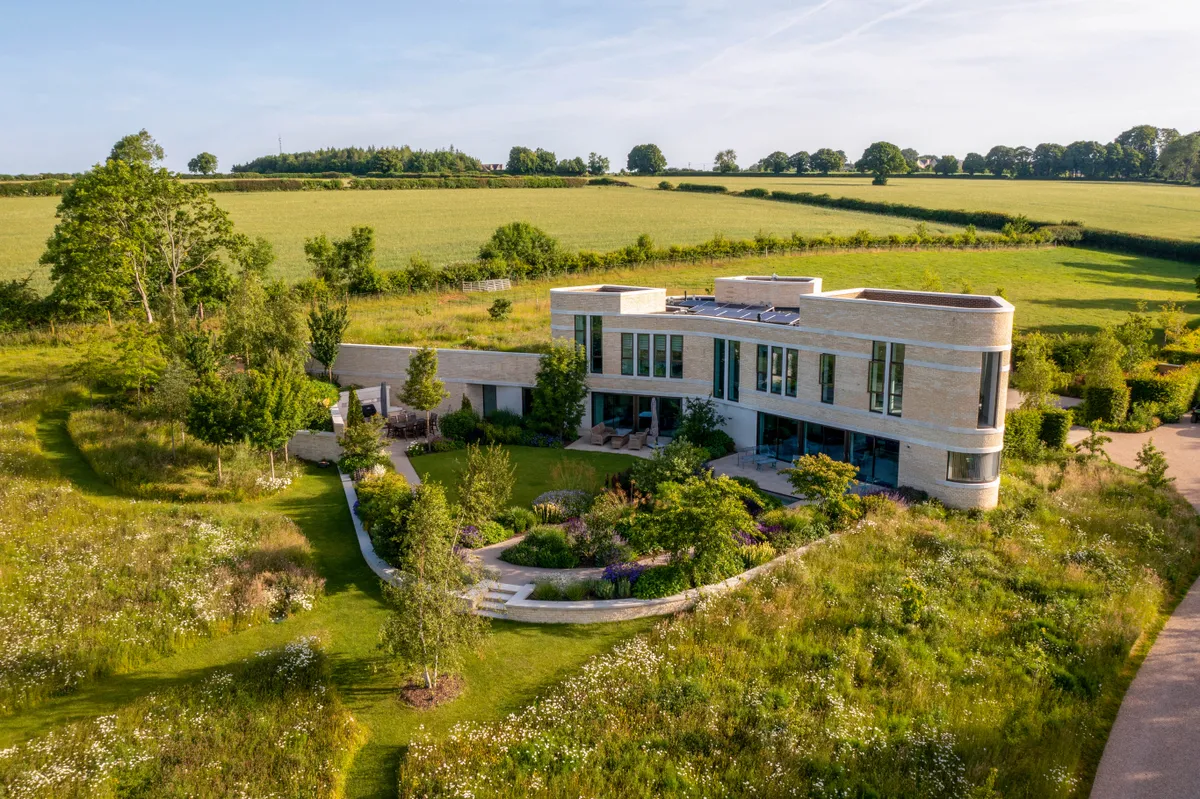
It soon became obvious that the garden would need to flow into the surrounding landscape. “The solutions almost presented themselves, and I ended up subtly choreographing. No corner of the site was left undisturbed in terms of how we could improve it, or work on what was there."
Chris was able to begin working at the same time as the architect, over a period of three years. “The result looks as if the contours have been plucked and readjusted, rather than the building imposing itself on the landscape. Visitors struggle to believe that what is in the wider landscape wasn’t already there.”
The borders
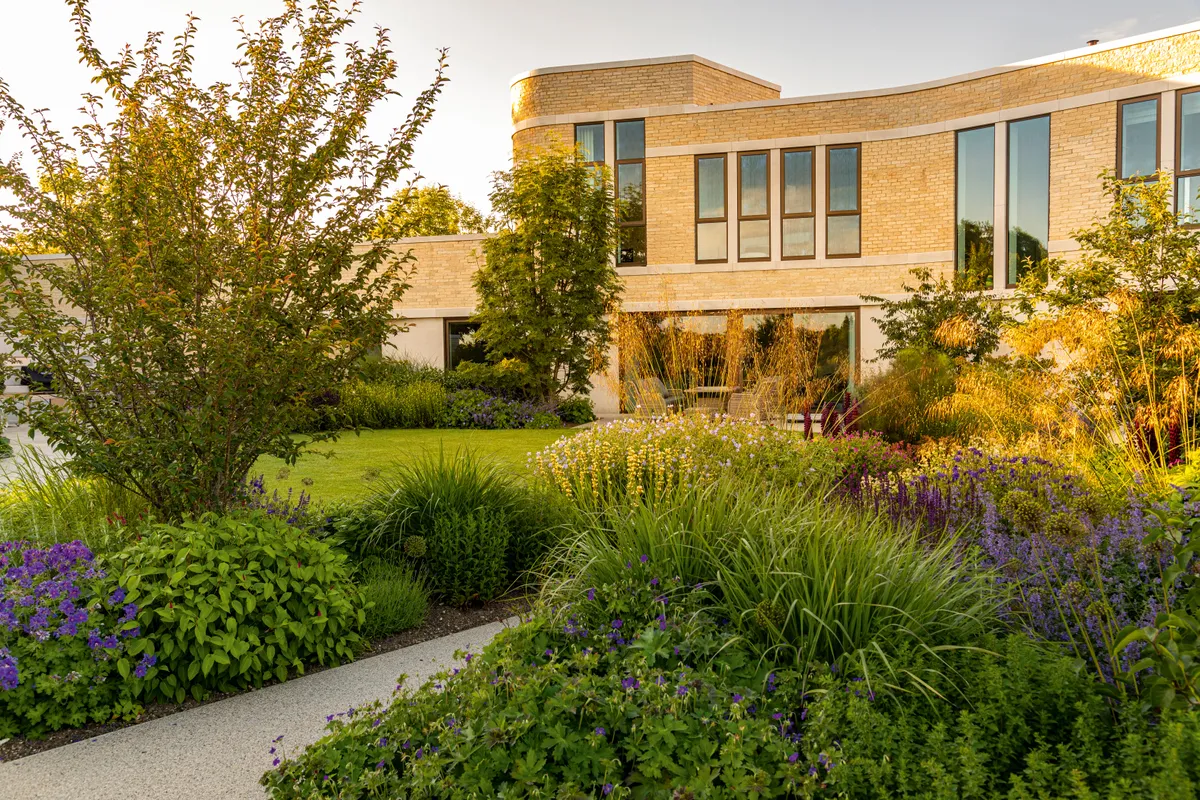
Much of the house is glazed, with sweeping views, but Chris did not want to guide the eyes to a ‘principal’ view. “We decided to play with the idea of the two planting beds, which are enormous in proportion to the path, so that it almost becomes too narrow to walk down, and you feel like you’re stepping into the floral borders.”
The borders feature around 10m x 20m of relaxed, informal, herbaceous planting, punctuated by shrubs and around 15 multi-stemmed trees, all chosen to give a long season of interest. The plants are straightforward stock, but resilient, and include Penstemon ‘Blackbird’, Lavandula x intermedia ‘Grosso’ and Salvia nemorosa ‘Caradonna’. The trees and shrubs connect to the landscape and play with perspective – crab apple, Malus ‘Evereste’ and pear, Pyrus calleryana ‘Chanticleer’ echo their larger, wilder cousins in the distance.
Orchards
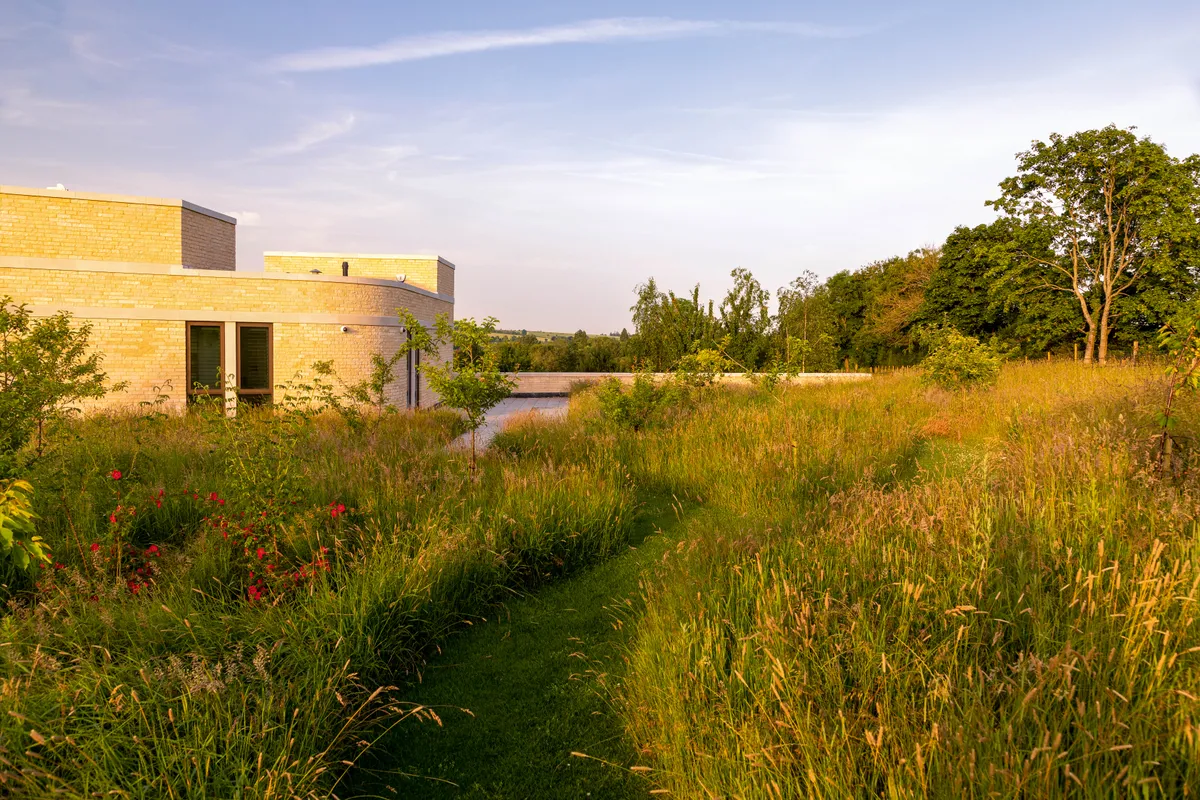
Part of the land had previously been an orchard, so Chris replanted historic and local fruit trees. In the lower orchard, they are grafted on to relatively small rootstocks to allow them to sit quite close to each other. Some of the spoil from the build was used to make a spiral mount, traditionally built in the corners of orchards. “Ladies in elegant dresses would ascend a spiral path, stand on the top on a bed of herbs and look out from the elevated position.”
In the upper orchard, the tree mix is more informal. “We bought apples that were being grubbed up from old orchards and managed to get some that had been wonderfully distorted and contorted from pruning. There’s also a collection of ‘drupes’ – in these parts, you see greengages and damsons used as hedgerow plants as they’re so good on clay soil.”
Meadows
The orchard areas are underplanted with perennial meadow mixes. In the lower orchard, Chris researched the species that would have been on the site 100 years ago. The area is maintained by sheep grazing. “The idea was to create a landscape, then manage it in a traditional way.” The lower orchard transitions into the upper royal meadow, so called as it is planted with the Royal Meadows Highgrove Mixture (available from Chiltern Seeds and Emorsgate Seeds). “Highgrove has similar conditions to here – wet in spring, and deep clay.” Some of this meadow is planted (at a depth of 10-20cm) on top of the underground part of the house, so there are skylights within it.
Lake and dew pond
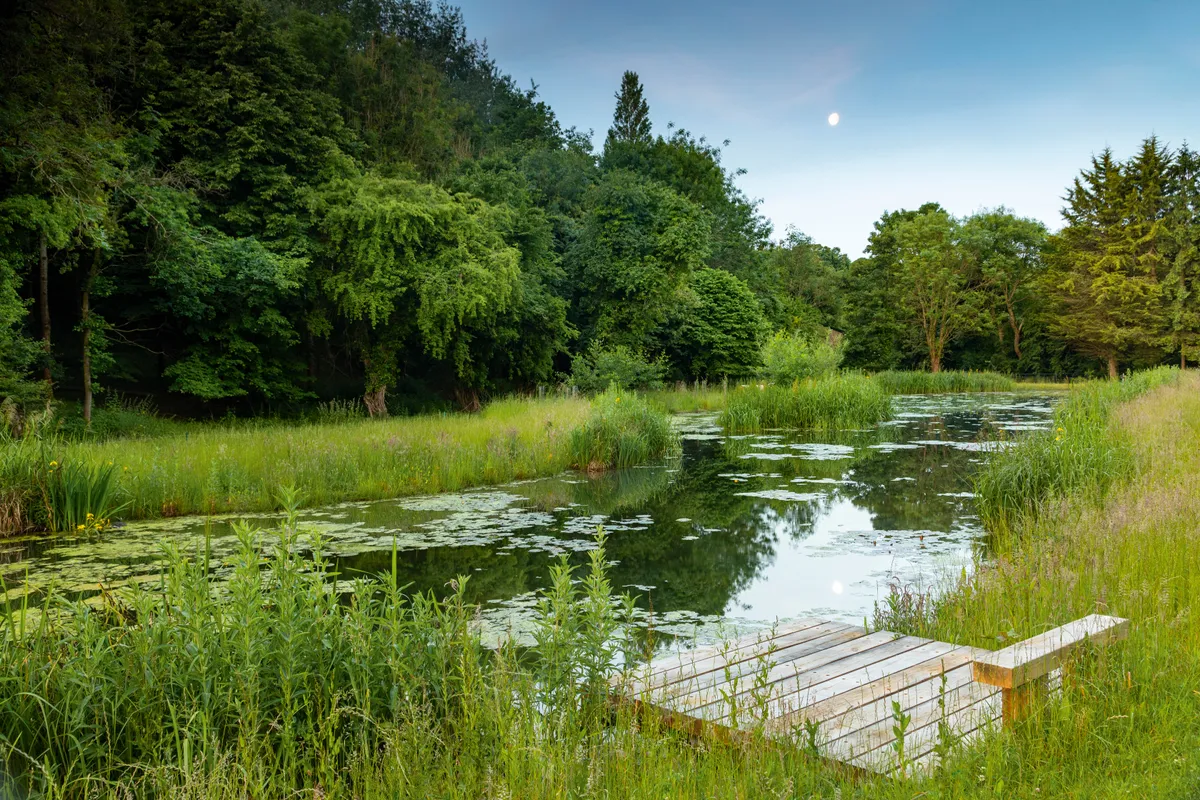
The house is cut into the hillside, resulting in thousands of tonnes of spoil. It was used to create a dew pond and lake at the bottom of the site. “We were able to raise the body of the meadow by 1.5m to 2m, to create a lake that is about 1.5m at its deepest point. Surface water from the house is harnessed and gathered, and what we couldn’t tank and use for irrigation flows into the dew pond. Then the dew pond overflows and feeds into the main lake.” The dew pond and lake are planted with native aquatics and marginals, and trees that love wet soil, such as black poplar and willow. The water adds to the sense of arrival at the house, and mist often settles atmospherically in this part of the valley.
Woodland
There were two areas of dense woodland already on the property: an entire bank at the bottom of the site and another parcel below the house. In the latter, everything was on a grid. “There were too many exotics and many of the trees were etiolated, dead or dying. But we wanted to keep that belt of woodland so that as you come up the drive, the house presents itself to you in an elegant way.”
Chris salvaged what he could and removed about 500 struggling trees; he then added the same number of native trees around the wider landscape, including beech, oak, downy and silver birch, crab apple and field maple. He made a clearing so that views were opened up, and added bluebells, wild garlic and other woodland plants. He also rejuvenated, relaid or reinstated hedges throughout the site, again using natives such as hawthorn, guelder rose, holly, hazel, elder, dogwood, blackthorn and wayfaring tree.
Fernery
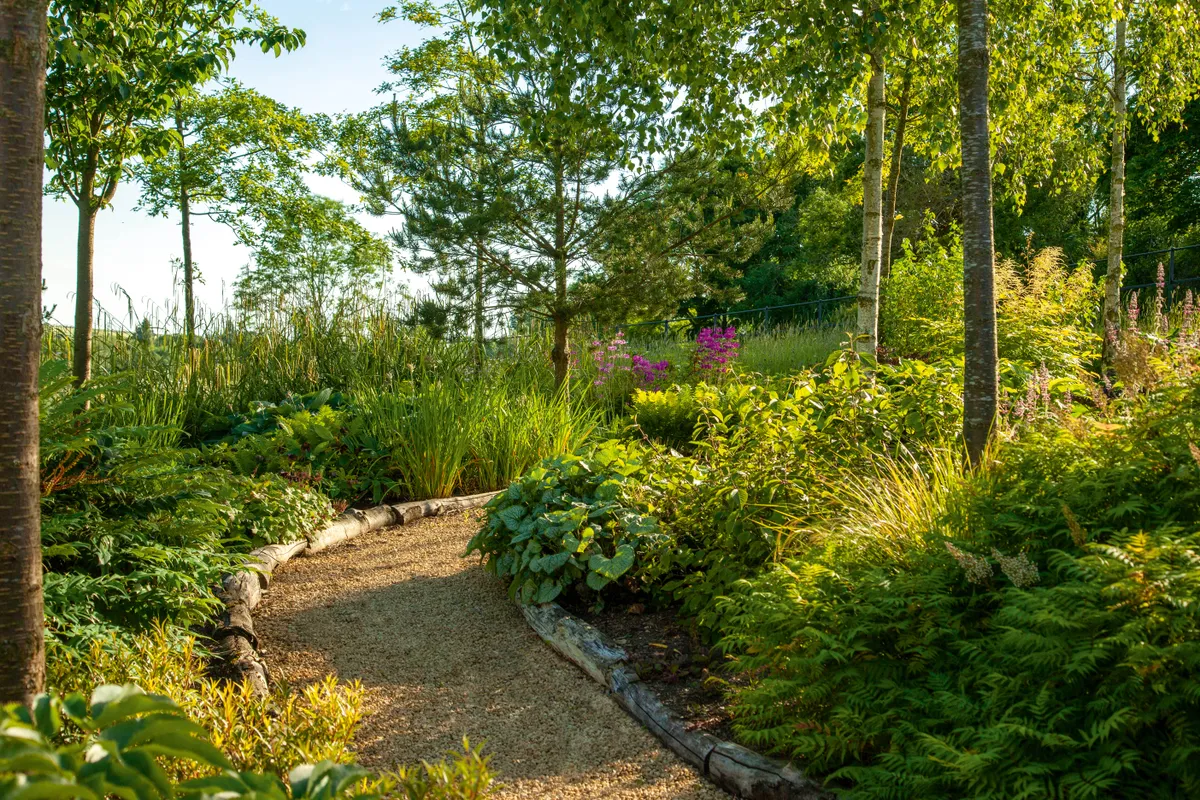
The clients wanted a sense that the woodland was integrated into the garden. Chris underplanted the trees near the dining terrace with ferns and woodland plants. “The clients can walk out of the house on to sunny terraces or into the shade of the fernery and revitalised woodland in just a few steps.”
Find out more about Chris’s work at www.chrisbeardshaw.com